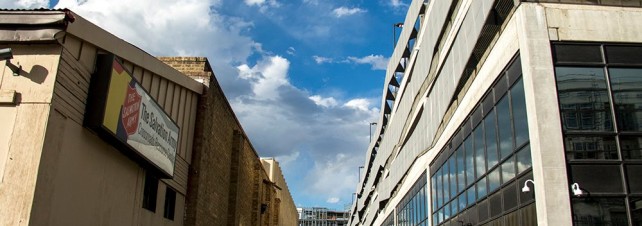This ran in The News & Observer. I tried to address an issue that I believe school systems and law-enforcement haven’t caught up with yet: The potential for abuse to go viral through social media, the same way photos and videos can. This new kind of bullying exponentially multiplies the number of people involved, and potentially the impact on victims. I’m not sure if better enforcement from Twitter and Instagram would solve the problem, or if the best we can do is educate kids and investigate these situations after the fact.
RALEIGH On Feb. 11, close to 70 nude and sexual images of local high school students were exposed to thousands upon thousands of their peers, and whoever else was watching.
For most of that evening, anonymous accounts on Instagram, a photo-sharing service, purported to show and shame girls and a few boys from the Wake County Public School System. The accounts would rack up as many as 7,000 followers within hours, duplicating faster than Instagram’s moderators could shut them down, according to Saige Hunt, a sophomore at Millbrook High School who reported the photos’ spread to Wake County education officials.
Weeks later, a state criminal investigation of the viral frenzy has spread to 13 counties where law agencies apparently have discovered similar behavior. Parents, educators and police alike are grappling with a dark fact about the social Web: When information travels fast as light, abuse can go viral.
“All night, that’s all people were talking about,” Saige, 15, said of the nude images.
These accounts had sprung up before in Wake County, she said, but never like they did on Feb. 11.
When it’s fully engaged, the social network built around the Wake County Public Schools System can deliver a torrent of messages and attention. The school system’s official Twitter account has about 41,000 followers, and local discussions about popular topics – such as snow days – can yield more than a thousand public messages per minute. As much as 99 percent of youths nationwide are using social media, according to the Pew Research Center.
All these factors mean it’s hard to control young people’s conversations – and the outbreak of abuse in February likely was the largest-yet example of the side effects here.
Saige recognized some of the people in the photos from her classes. Almost all were young women.
The Wake County photos often were distributed without the subject’s permission, Hunt said. Some students shared the nude accounts gleefully, while others said the public shaming was immoral and piggish.
“At first, when it wasn’t that big, I thought it was another phase … but then I noticed the captions of the pictures were really mean stuff,” she said. The anonymous accounts and their followers would call the girls “hoes,” making fun of their exposed bodies, she said.
“I was honestly just worried that someone would try to hurt themselves,” Saige said. “If that stuff was being said about me, I don’t know how I would handle it.”
Backlash
The 15-year-old was among the first to report the apparent crimes. At 10 that night, she tweeted a warning to the official school system account, asking that the schools “fix this.”
The school system’s Twitter account asked her to give more details via private message, and it encouraged students to report the abusive accounts to Instagram. But Saige also was hit by an instant backlash.
Her plea for action was reposted by about 60 other people, and within minutes, hundreds of people had written tweets to her, she said. Some praised her, but many seemed to defend the mass unauthorized sharing of what may be, legally speaking, child pornography.
“A lot of people were not threatening me, necessarily, but blaming me and calling me a snitch,” she said.
Reports of the mass sharing seemed to spur law agencies across the state to action. Wake Forest police opened a case the next day in response to a mother’s complaint. The Wake County district attorney’s office began a broader inquiry, and in turn asked the State Bureau of Investigation for assistance.
The SBI’s work began Feb. 19, and it has drawn in agencies from at least 13 counties. In some cases, the agencies independently came across abusive photo sharing as word of the Wake County incident spread.
The investigation now includes every county in the Triangle and spans as far afield as New Bern and Mount Airy. The SBI is looking into at least 30 social-media accounts.
“It appeared as if there were students who sent pictures to boyfriends or girlfriends,” said Lt. Brian Woods of the Havelock Police Department, which is involved in the state investigation. “They end up breaking up. Those photos end up being placed on websites, allegedly, for others to see.”
The investigation’s goal now is “identifying the account creators and/or those responsible for uploading the images,” wrote Noelle Talley, a spokeswoman for the state Department of Justice.
Criminal charges?
The SBI has not outlined what charges it might invoke, but the Durham County Sheriff’s Office has mentioned a potential charge of “dissemination of obscenity,” which is a felony.
Anyone who participated in the online spread of nude underage images could face a range of criminal consequences, including charges of sexual exploitation of a minor and cyberbullying, according to Jeffrey Welty, an associate professor of public law and government at the UNC-Chapel Hill School of Government.
Law enforcement agents will have many clues for their investigation, likely including Instagram and Twitter’s digital records. They won’t, however, be able to delete the photos that people may have copied and saved.
Even with renewed focus, it’s unlikely that either social media platforms or North Carolina’s authorities will prevent future outbreaks of underage photo sharing, according to experts in the field.
The exchange of nude photos has become something of a “dating ritual” for some teens, according to Nancy McBride, executive director of the National Center for Missing & Exploited Children’s Florida regional office. She has seen research indicating that between 4 percent and 20 percent of teenagers send sexual photos, she said.
While the adult world has known for years about “sexting” – the digital exchange of nudes – the interconnection of social networks has given the images a mobility that surprises even experienced law officers and policymakers.
Unpredictable
“It’s going to be really interesting to see how widespread it becomes. In reality, it’s probably just Pandora’s box,” said Capt. Doug Stuart of the Chatham County Sheriff’s Office. “They’ve probably just scratched the surface.”
Social networks that are designed to spread images and written messages have brought unpredictable consequences for age-old teenage behaviors, such as sexual relationships, according to Zeynep Tufekci, an assistant professor at the School of Information and Library Science at UNC-Chapel Hill.
“They are not really that different from previous generations, but they’re now doing it in a way that … can spiral out of control,” said Tufekci, whose research areas include the social impacts of privacy and technology. “It’s a networked world. So if you make a mistake, or something that’s meant for a certain audience, it can blow out of proportion very quickly.”
Tufekci and McBride point to education as the most obvious way to discourage online abuse and to protect teenagers from its effects. They want to see boys and girls alike taught about how quickly images and conversations can spread, and the consequences such massive exposure can bring.
Social-media literacy
“You basically have to have social media literacy. You have to teach young people how to engage in the new public sphere as best you can, as early as possible,” Tufekci said. North Carolina’s educational standards include social media literacy, according to Samiha Khanna, a Wake County schools spokeswoman.
Tufekci also said that law enforcement and social media platforms need to work to shut down abusive accounts within minutes. But companies such as Instagram already move fast, she said, and preventing viral popularity is “very, very hard.”
Allie Rosenberg, a representative for Instagram, headquartered in San Francisco and owned by Facebook, did not answer a series of questions about how the company responds to situations like Wake County’s.
Rosenberg did write in an email that the company has clear policies about what’s allowed, and that there are links to report abuse on every piece of user-made content on the site. The company has teams trained to respond to reports of abuse, she wrote.
In Wake County, meanwhile, students created or shared a wave of “positive” online responses meant to spotlight “beautiful girls” or give compliments. Weeks later, those accounts appear to be closed or private.
“You can’t really restrict people from posting what they want to post,” said Saige, the sophomore. “I think it’s just the fact that some kids want attention and they want to stir up stuff. I don’t think anything will stop it, except a change in character – and that might not happen.”

